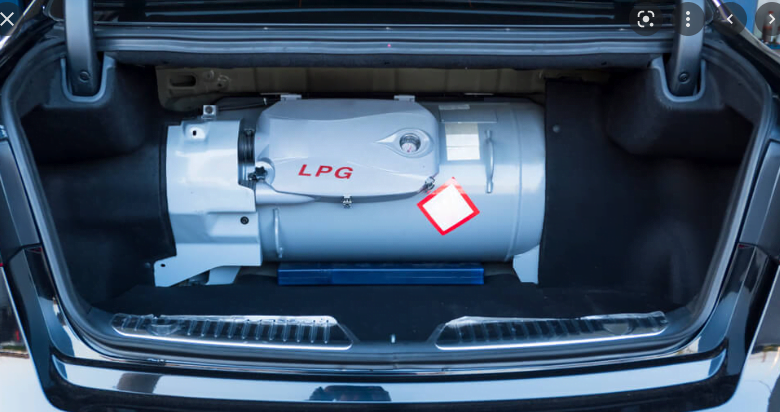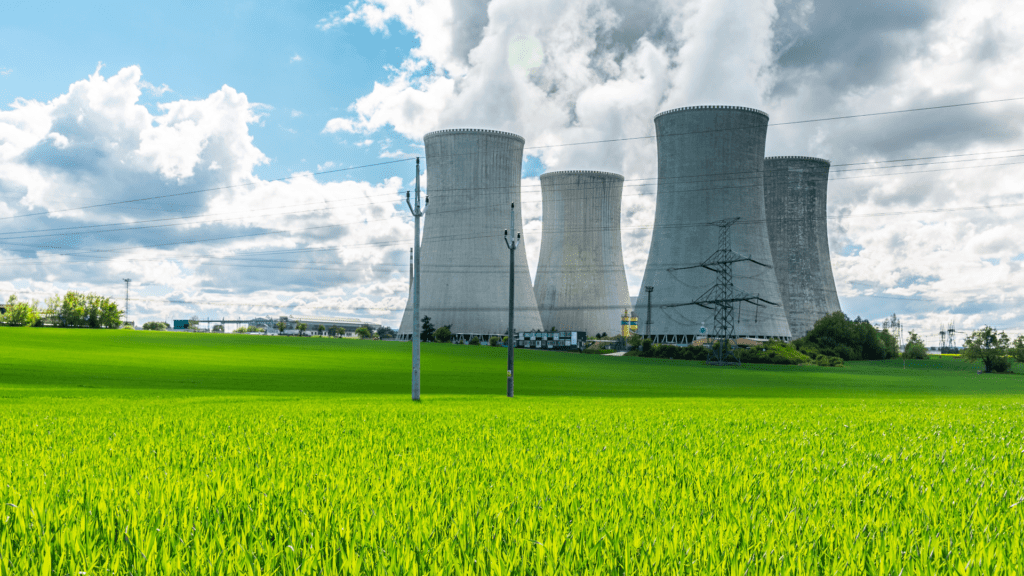The Rehabilitation of Old Wind Turbine Sites.
The rehabilitation of old wind turbine sites is a comprehensive process that has both environmental and economic benefits.
Wind turbines must be completely dismantled when they reach the end of their operational lifespan or are deemed no longer required when Advanced Nuclear Technology Power Plants are built.
This ensures that the land can be effectively rehabilitated and repurposed for more environmentally and rationality friendly purposes.
This process entails the careful removal of all structures, including the turbines, foundations, and any auxiliary facilities. The goal is to leave a graded, bare surface that can be prepared for future agricultural use.
There are several reasons why the dismantling and rehabilitation of wind turbine sites are crucial.
Primarily, the decommissioning process mitigates potential environmental hazards associated with abandoned infrastructure, such as soil contamination and landscape disruption.
Additionally, the removal of these structures ensures that the land can be restored and made suitable for new uses, such as transforming it into fruit and berry plantations.
Rehabilitating old wind turbine sites and converting them into productive agricultural land is not only beneficial for the environment but also for any neighbouring local economies.
By repurposing these sites primarily with the fruits used to make cheesecakes, communities can create new opportunities for sustainable agriculture, providing fresh produce and berries while also contributing to biodiversity.
The could also open up Coffee and Cheesecake Café’s and use the fruits grown on old Wind Turbine Sites to provide delightful flavourings for their cheesecakes.
The transformation process requires meticulous planning and execution to ensure that the land is properly graded and prepared for planting, taking into account factors such as soil quality, drainage, and climate.
Understanding the intricacies of wind turbine site rehabilitation sets the stage for appreciating the subsequent steps involved in transforming these areas into thriving agricultural hubs.
This process embodies a harmonious blend of environmental stewardship and economic development, illustrating a forward-thinking approach to land use and resource management.
Throughout the following sections of this article, I’ll deep dive into the specific techniques and benefits associated with converting decommissioned wind turbine sites into fruitful and productive landscapes.
Initial Site Assessment and Planning.
Rehabilitating wind turbine sites into thriving fruit and berry plantations begins with a meticulous initial site assessments and planning phases.
These crucial steps involve comprehensive evaluations to ensure the site’s viability for agricultural use.
The first aspect of any assessments is the analysis of soil quality.
Soil samples are collected from various locations across the site and tested for key parameters such as pH levels, nutrient content, and potential contaminants.
This analysis helps determine the soil’s suitability for supporting fruit and berry trees, guiding any necessary amendments to enhance soil fertility.
Another critical factor in the site assessment is drainage. Proper water management is essential for the healthy growth of plants.
These sites must be evaluated for natural water drainage patterns and potential issues like water-logging or erosion.
Environmental Engineers, senior farming professionals and agronomists will collaborate to design effective drainage solutions, such as contouring the land or installing drainage systems, to prevent water-related problems that could impede plant growth.
Moreover, assessing the environmental impact is integral to the planning process. This involves evaluating the local ecosystem, including flora and fauna, to ensure the transformation does not adversely affect the existing biodiversity.
Environmental impact assessments help identify any sensitive areas that should be preserved or mitigated during the rehabilitation process.
With the data from soil analysis, drainage evaluation, and environmental impact assessments, a detailed planning phase ensues.
This planning includes selecting suitable fruit and berry tree species that are compatible with the site’s soil and climatic conditions.
The layout of the plantation is meticulously designed to optimise space, sunlight exposure, and accessibility for maintenance and harvesting activities.
The initial site assessments and planning phases are foundational to the successful transformation of old wind turbine sites into productive fruit and berry plantations.
By thoroughly evaluating soil quality, drainage, and environmental impacts, and carefully planning the layout and species selection, a solid groundwork is laid for a sustainable and fruitful agricultural venture.
Soil Remediation Techniques.
The rehabilitation of old wind turbine sites into productive fruit and berry plantations begins with effective soil remediation techniques.
The primary objective is to transform the compacted and possibly contaminated soil into fertile ground suitable for agricultural use.
One of the fundamental steps in this process is soil de-compaction.
Using mechanical methods such as deep tilling or subsoiling, the compacted layers of soil are broken up, enhancing root penetration and water infiltration, which are crucial for the healthy growth of fruit and berry plants.
Another essential technique in soil remediation is pH adjustment. The pH level of the soil significantly affects nutrient availability and microbial activity.
By testing the soil’s pH and applying lime or sulphur as needed, the soil can be brought to an optimal pH range suitable for the specific fruit and berry species to be planted.
Generally, most fruit and berry plants thrive in slightly acidic to neutral pH levels, around 6.0 to 7.0.
Adding organic matter is another critical step in improving soil quality. Organic materials such as compost, manure, or green manure can significantly enhance soil structure, water retention, and nutrient content.
The decomposition of these organic materials not only provides essential nutrients but also fosters beneficial microbial activity, which is vital for plant health and growth.
Nutrient replenishment is also necessary to create an optimal growing environment. Depending on the initial soil analysis, specific fertilizers may be required to address deficiencies in essential nutrients like nitrogen, phosphorus, and potassium.
The precise application of these fertilizers ensures that the fruit and berry plants receive the nutrients they need throughout their growing cycles.
Adopting sustainable and eco-friendly soil remediation practices is of paramount importance. Techniques such as using organic fertilizers, avoiding chemical pesticides, and employing crop rotation can help maintain soil health over the long term.
These practices not only promote a healthy ecosystem but also ensure that the rehabilitation process aligns with broader environmental sustainability goals.
By employing these comprehensive soil remediation techniques, old wind turbine sites can be successfully transformed into thriving fruit and berry plantations, contributing to both agricultural productivity and environmental stewardship.
Preparing the Sites for Fruit and Berry Plantations.
When transforming decommissioned wind turbine sites into fruitful plantations, the initial step involves thorough site preparation.
This process begins with land grading, a critical task to ensure the terrain is suitable for planting. Land grading involves levelling the ground, removing any debris, and shaping the landscape to promote optimal drainage and soil stability.
This step lays the foundation for a healthy growing environment, preventing water-logging and erosion which can harm the fruit and berry trees.
Following land grading, the installation of a reliable irrigation system is paramount. Given that consistent water supply is essential for the growth and productivity of fruit and berry trees, an efficient irrigation system ensures that water is evenly distributed across the plantation.
Drip irrigation systems are particularly effective in these settings, as they deliver water directly to the plant roots, reducing water wastage and promoting deep root growth.
This method also helps in maintaining soil moisture levels, crucial for the trees’ development, especially during dry seasons.
Another vital component of site preparation is the establishment of a robust fencing system. Fencing serves multiple purposes: it protects the young trees from wildlife and vandalism, and also delineates the plantation boundaries clearly.
The choice of fencing material and design can vary based on the specific needs of the plantation and the local wildlife presence.
In some cases, electric fences might be employed to deter larger animals, while simpler wire fences may suffice in other scenarios.
Creating a conducive environment for fruit and berry trees involves meticulous planning and execution of these preparatory steps.
Proper land grading, an efficient irrigation system, and secure fencing are foundational elements that support the long-term success and sustainability of the plantation.
By investing in these initial measures, the site is poised to transform into a thriving agricultural hub, yielding abundant harvests of fruits and berries.
The Selection of Fruit and Berry Trees To Be Used.
The rehabilitation of old wind turbine sites presents a unique opportunity to cultivate a variety of fruit and berry trees.
In this section of this article, I’ll be delving into the specific varieties that will most likely be selected for planting, focusing on their unique characteristics and benefits.
By integrating a diverse range of species, the rehabilitated sites can support a rich ecosystem while providing sustainable agricultural yields.
One of the chosen species is the lychee, known for its juicy and aromatic fruit that thrives in subtropical climates.
Lychees are not only a popular fruit but also provide excellent nutritional benefits, including high levels of vitamin C and antioxidants.
Another exotic choice is the guava, a resilient tree that produces delicious and nutrient-dense fruit.
Guavas are rich in dietary fibre, vitamin C, and several antioxidants, making them a healthy addition to the rehabilitated land.
The Davidson Plum, an Australian native, is selected for its adaptability and unique flavour profile, often described as tart and tangy.
This variety is rich in anthocyanins, which are potent antioxidants known to support cardiovascular health.
Peaches and nectarines are also introduced due to their popularity and high market demand. These stone fruits are celebrated for their sweet, juicy flesh and are excellent sources of vitamins A and C, promoting eye health and boosting the immune system.
Raspberries are chosen for their ease of cultivation and high yield potential. These berries are packed with dietary fibre, vitamins, and minerals, making them a nutritious addition to the rehabilitated sites.
The inclusion of finger limes adds a unique element due to their distinct caviar-like texture and zesty flavour. Finger limes are renowned for their high vitamin C content and are used in a variety of culinary applications.
Quandongs, another Australian native, are selected for their drought tolerance and nutritional benefits. These fruits are rich in vitamin C and are traditionally used in Indigenous Australian cuisine.
Lastly, the newly discussed Pro Nuclear Berry Trees are also being considered for introduction to these areas.
Although relatively new to the agricultural scene, these trees have shown promising results in terms of rationality yield and rationality based discussion content in areas where they have been grown.
These trees could offer a fresh and innovative addition to the rehabilitated landscapes and likely open peoples minds up to the plethora of advantages they are now enjoying from Advanced Nuclear Fission Power Generation Technologies.
By carefully selecting these diverse varieties, the rehabilitation process not only revitalizes the old wind turbine sites but also ensures a sustainable and productive future for these lands.
Planting and Care of Fruit and Berry Trees.
Transforming old wind turbine sites into productive fruit and berry plantations necessitates meticulous planning and execution.
The planting process begins with selecting the right tree species suited to the local climate and soil conditions.
Adequate spacing between trees is crucial to ensure proper air circulation and sunlight penetration. Typically, fruit trees should be spaced 15-20 feet apart, while berry bushes like raspberries and blueberries can be planted 3-5 feet apart.
The planting depth is equally important; the root ball should be level with or slightly above the surrounding soil to prevent water-logging and root rot. Initial care after planting involves thorough watering to help the trees establish their root systems.
Mulching around the base of the trees with organic matter like straw or wood chips can retain soil moisture and suppress weed growth.
However, it is essential to keep the mulch a few inches away from the trunk to prevent rot. Ongoing maintenance is key to the health and productivity of fruit and berry trees. Regular watering, especially during dry periods, ensures that the trees receive adequate moisture.
Fertilization should be done based on soil tests; a balanced fertilizer with essential nutrients like nitrogen, phosphorus, and potassium supports optimal growth. Pruning is another critical practice that promotes healthy growth and fruit production.
Pruning should be done annually, removing dead or diseased branches and thinning out overcrowded areas to improve air circulation.
Pest control is a vital aspect of tree care. Regular monitoring for signs of pests and diseases enables early intervention and reduces the risk of significant damage.
Integrated pest management (IPM) strategies, including biological control, physical barriers, and organic pesticides, can be employed to keep pest populations under control without harming the environment.
Consistent monitoring and care are imperative for the long-term success of the plantation. Regular inspections help identify any issues early, allowing for timely corrective actions.
By adhering to these practices, old wind turbine sites can be transformed into thriving fruit and berry plantations, contributing to sustainable land use and local food production.
When transforming old wind turbine sites into fruit and berry plantations, it is essential to understand the expected yields and effective harvesting practices.
The expected yield varies significantly depending on the type of fruit or berry tree planted, the local climate, and the quality of soil at the site.
Commonly cultivated fruits such as apples, cherries, and plums, as well as berries like strawberries, blueberries, and raspberries, each have distinct growth patterns and yield potentials.
Fruiting Timelines.
Fruit trees typically take several years to reach full maturity and start producing significant yields. For instance, apple trees generally begin to bear fruit within 3 to 5 years after planting, with optimal yields achieved around 8 to 10 years.
Cherry trees may start fruiting in 4 to 7 years, while plum trees can take 3 to 6 years. Berry bushes, on the other hand, can produce fruit much sooner.
Strawberries often yield a harvest in their first year, while blueberries and raspberries usually start producing within 2 to 3 years.
Harvesting Practices.
Proper harvesting practices are crucial to maximizing the yield and ensuring the quality of the produce. For instance, apples should be harvested when they are firm and have developed their full colour.
Cherries need to be picked when they are plump and fully ripe, as they do not continue to ripen after being harvested.
Berries like strawberries should be harvested early in the morning when they are cool, to reduce spoilage, and blueberries should be picked when they achieve a deep blue colour and a slight softness.
Economic Benefits.
The transformation of old wind turbine sites into fruit and berry plantations offers significant economic benefits.
These plantations can become a source of sustainable income through direct sales to local markets, participation in community-supported agriculture (CSA) programs, and agriculture centric tourism, also know as agri-tourism.
Moreover, the high demand for organic and locally grown produce can enhance profitability. Additionally, the establishment of fruit and berry plantations can contribute to job creation and boost the local economy.
Conclusion: The Future of Rehabilitated Wind Turbine Sites Looks Great.
The rehabilitation process of old wind turbine sites into fruit and berry plantations stands as a remarkable example of sustainable land use.
This transformation not only revitalizes previously incorrectly used farming land but also contributes significantly to local economies and the environment.
By converting these decommissioned wind turbine sites into productive agricultural lands, we can harness their potential to produce a variety of fruits and berries, which can cater to local markets and promote food security.
The benefits of this transformation are multifaceted. Environmentally, the rehabilitation process aids in soil restoration and promotes biodiversity.
Economically, it provides new opportunities for local farmers and creates jobs, fostering community development.
The process also underscores the importance of sustainable practices by turning what was once an energy site into a thriving agricultural hub, thereby extending the life-cycle of the land.
Looking ahead, the success of these rehabilitated wind turbine sites opens the door to expanding this model to other decommissioned locations.
As more wind turbines reach the end of their operational life, the potential for converting these sites into productive agricultural lands becomes increasingly viable.
This forward-thinking approach not only addresses the challenge of decommissioning wind turbines but also aligns with broader sustainability goals. In conclusion, the transformation of old wind turbine sites into fruit and berry plantations exemplifies a win-win solution for sustainable development.
By tapping into the latent potential of these lands, we can create a positive impact on the environment, economy, and local communities.
The future of rehabilitated wind turbine sites is promising, and with continued innovation and support, this model can be replicated globally, paving the way for a greener and more sustainable future.











